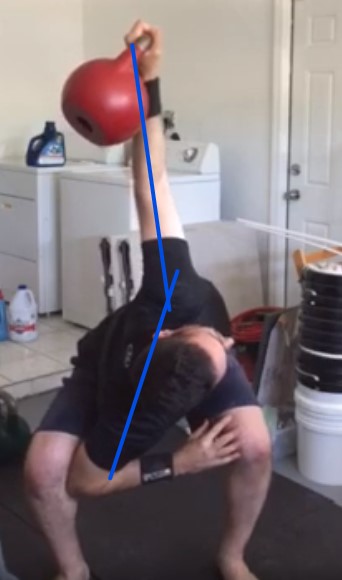SuperGirevik
Level 3 Valued Member
I've been alternating between Simple & Sinister and snatches/bent presses for over a month now. I feel like my stronger side is able to perform the bent press correctly (or at least better) but my strong side struggles. The whole movement feels a bit awkward and I tend to feel a little soreness in my front deltoid. Also while doing the BnP with my left arm, my right hamstring feels tight/sore. Yet I feel none of these things when doing a BnP with my right arm  FYI, I did suffer from a De Quervain's syndrome over 6 months ago on my left wrist and have been nursing it back to health (doing KBs has actually helped my wrist get stronger and more stable).
FYI, I did suffer from a De Quervain's syndrome over 6 months ago on my left wrist and have been nursing it back to health (doing KBs has actually helped my wrist get stronger and more stable).
Here is a video of me attempting a 32kg bent press...
I noticed on my strong side (aka left) that my arm seems like it leans back and that could be causing my deltoid soreness. I can try to force my arm to lean more towards my chest but it feels like I might loose balance.

From the video I took, I'm starting to think I lack mobility. My torso isn't rotating enough I think and it's causing my arm to over compensate by moving back to reach the center.
I'm currently doing 2 x 32kg + 3 x 40kg TGUs and I feel great doing them. So I'm tempted to drop the bent press but... I really admire the movement and would like to learn it.
Thanks in advance for taking the time to read my post
p.s. I'm using a GS style clean for now.
Here is a video of me attempting a 32kg bent press...
I noticed on my strong side (aka left) that my arm seems like it leans back and that could be causing my deltoid soreness. I can try to force my arm to lean more towards my chest but it feels like I might loose balance.

From the video I took, I'm starting to think I lack mobility. My torso isn't rotating enough I think and it's causing my arm to over compensate by moving back to reach the center.
I'm currently doing 2 x 32kg + 3 x 40kg TGUs and I feel great doing them. So I'm tempted to drop the bent press but... I really admire the movement and would like to learn it.
Thanks in advance for taking the time to read my post
p.s. I'm using a GS style clean for now.
Last edited:
